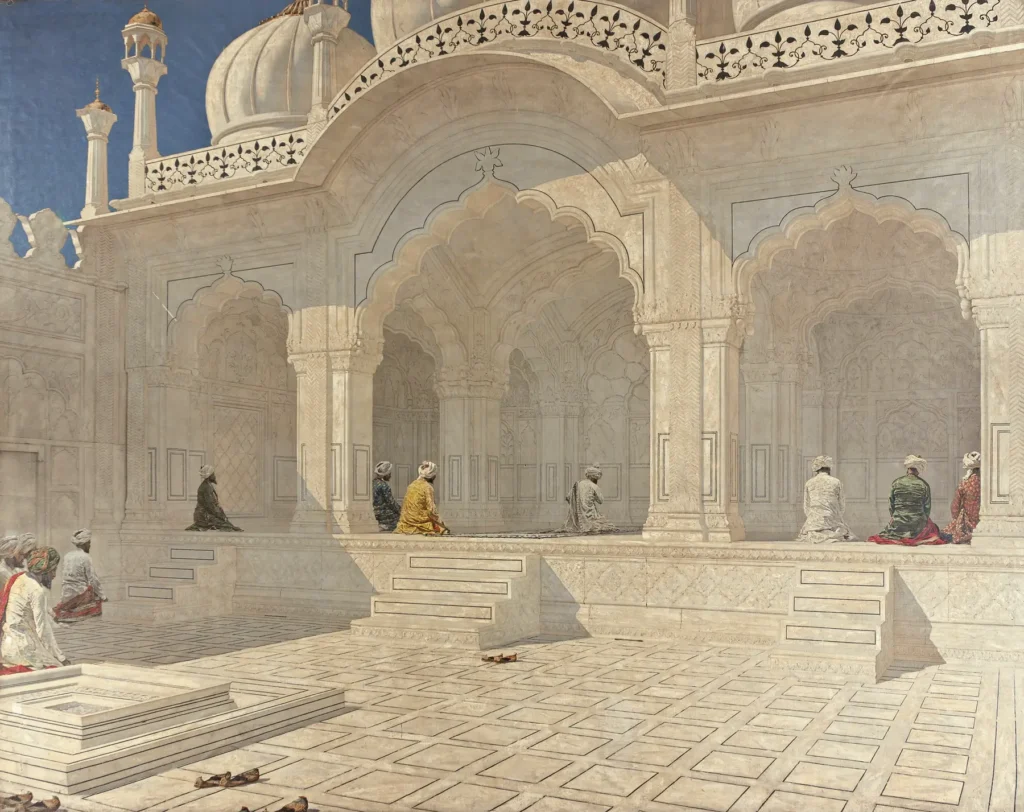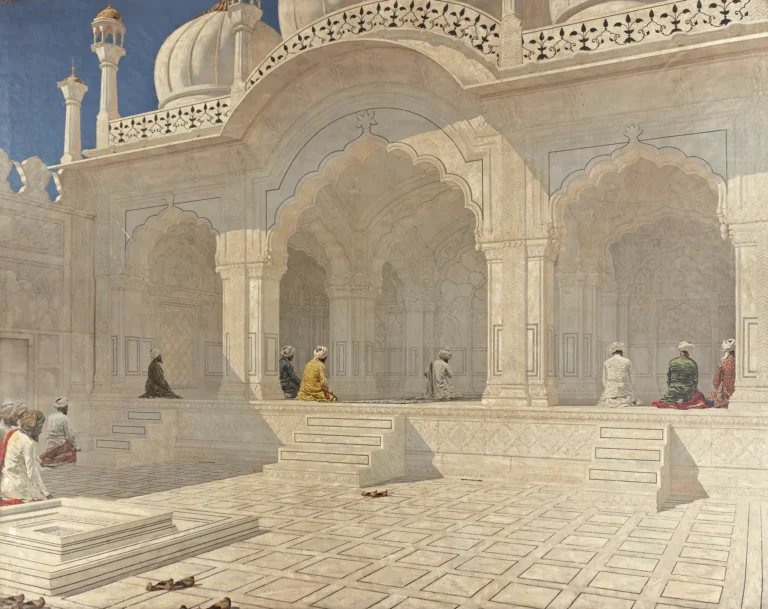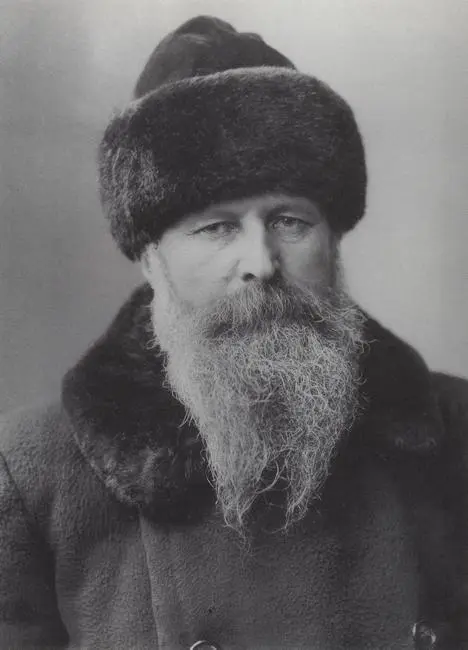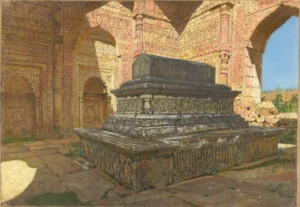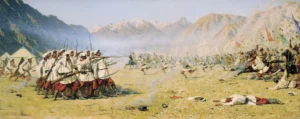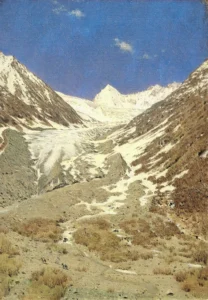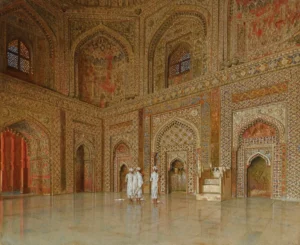Pearl Mosque At Delhi (1876-79)
This stunning piece titled Pearl Mosque At Delhi showcases the architectural splendor of the Pearl Mosque located in Delhi's Red Fort complex. Painted by renowned Russian artist Vasily Vereshchagin between 1876 and 1879, the work exhibits intricate details and a profound respect for its subject. Vereshchagin's extensive travels and meticulous attention to the cultural elements of India enabled him to create a masterpiece that transcends time, capturing the mosque's timeless elegance and the historical significance of its setting.
1876 - 1879
About the Artwork
Pearl Mosque At Delhi was created during a transformative period in Vasily Vereshchagin's career. As a war artist and an Orientalist, Vereshchagin traveled extensively throughout Asia, immersing himself in diverse cultures and landscapes. His portrayal of the Pearl Mosque reflects not only his skillful technique but also his dedication to realism, as he sought to convey a truthful representation of the mosque's beauty and the heritage it represents. The painting was acquired by the Museum of Fine Arts in Boston shortly after its completion, solidifying its place in art history and continuing to inspire viewers with its grandeur and historical context.
Did You Know
Liked what you see? Add it to your collection.
Enjoyed reading? Share it.
... continued
Artist and Period
Vasily Vereshchagin, a prominent Russian war artist and Orientalist, painted this work during his travels to India. Vereshchagin was known for his realistic and detailed depictions of scenes he encountered during his journeys.
Title and Subject
The painting is titled Pearl Mosque At Delhi and depicts the Pearl Mosque, a significant architectural landmark in the Red Fort complex in Delhi, India. The mosque is known for its beauty and historical importance.
Medium and Dimensions
The painting is executed in oil on canvas and is quite large, measuring 395 cm in height and 500 cm in width (approximately 12.9 feet by 16.4 feet).
Location and Provenance
The painting is part of the collection at the Museum of Fine Arts, Boston. It was acquired by the museum on March 8, 1892, after being purchased from the Vassili Verestchagin Collection sale in New York in 1891.
Style and Technique
Vereshchagin's work is characterized by its realism and attention to detail. He was meticulous in his research and preparation, ensuring that the costumes, landscapes, and figures in his paintings were accurately represented.
Historical Context
This painting, along with others by Vereshchagin, was part of a series of works that garnered significant attention and acclaim during his lifetime. His exhibitions in various cities, including New York, were highly successful and drew large audiences.




